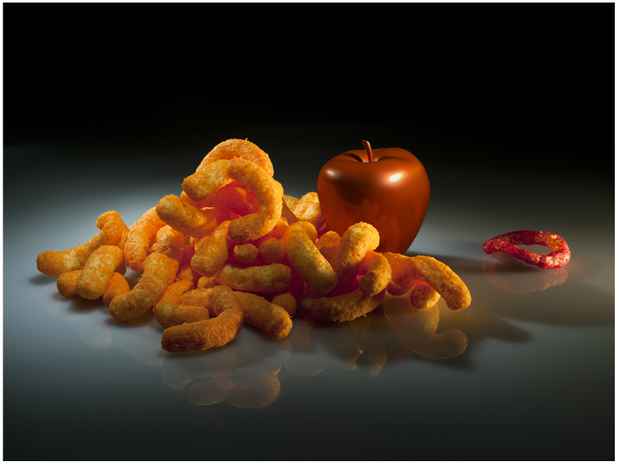Claudia Hart "When A Rose is Not a Rose"
Bitforms Gallery

This event has ended.
bitforms gallery presents a second solo exhibition with the Chicago-based artist Claudia Hart. When A Rose is Not a Rose, Hart’s reflection on the ubiquitous Gertrude Stein poem from 1913, presents the artist’s recent explorations on her own denial of death. The exhibition’s muted wall text, “When this you see remember me”, also quotes the title of W.G. Roger’s biography on Stein, functioning as a cold reminder of mortality, a memento mori.
Primarily using photography and animated video, Hart crafts compelling metaphors for Freud’s das unheimlich (the uncanny) in virtual statues and models that are filled with human emotion, such as loss, pain and the fear of death. Psychically charged, these pieces present the viewer with objects that are simultaneously dead and alive - uncanny in the sense that they are realistic, but impossibly so. In addition to working with the human figure, Hart’s recent musings on the death of food also feature in this debut of The Real and The Fake, a new series of photographs.
“The impulse to use technology as a means to control nature is inherently Modernist,” says Hart. “There is a built in uncanniness in the tools, which create meta-planes that fix a user’s body into a virtual space that is beyond time and death.” Using 3-D digital media as a means to consider our culture’s detachment from human vulnerability, Hart plays with the grotesque edge of the uncanny valley.
In Caress, our perception of a nude female figure is split between three video monitors, portraying a lifesized character “framed” within an imprisoning box or coffin. This figure strains against its confines. The image is black and white, sculptural, and imagined in relation to tomb sculptures and the portals of Gothic churches. As a result of this scenario, the camera literally appears to caress the figure. They are both, figure and camera, locked in an embrace: camera-to-figure sex. The virtual camera slides from shot to shot over the nude, who moves slowly from pose to pose. Originally composed with the woman lying on a divan, as an odalisque, Hart subsequently removed the furniture feature to accentuate the figure’s eerie entrapment.
The Real and The Fake series are a set of still-life photographs* that contemplate the death of food. They are Hart’s response to surreal trips down the aisles of her local supermarket, where the opportunity to buy anything that is not highly artificial or toxic is severely limited. The Real and The Fake photos are classical still lives of nutritionally-empty industrial snack-foods that nevertheless have appealing Platonic forms. Photos of these fake real foods are integrated with obviously simulated computer graphics of apples. In these images, the real and the fake implode. They are representations that are fake but seem real, and are real but seem fake. Their style is also a hybrid, bridging between classical still-life painting - Cezanne's apples! - and an industrial product shot.
Playing with notions of digital decay and the baroque, as another manifestion of the uncanny, Hart’s Photomortifications brings the ody into a virtual realm where it is mathematically “mutilated”. In the photograph “Hell,” Hart subjects a computer-modeled figure to irregular and fractal geometric deformations, and sets the body within an environment of technocratic architecture. Calatrava’s hyper-Modernist Milwaukee Art Museum surrounds a body that simultaneously evokes rot, decay and rational algorithmic permutation -creating a tension that rejects the vacuousness and oppressive anonymity of bureaucratic techno-culture.
Also this month, Claudia Hart presents Recumulations in a concurrent solo exhibition at Black and White Gallery, Brooklyn. This digital-dance performance, made in collaboration with Roberto Sifuentes and Edmund Campion, reconsiders Trisha Brown’s Primary Accumulation (1972), the seminal dance film, in a contemporary context of post-analog media.
Claudia Hart (b. 1955, New York) has been active as an artist, curator and critic since 1988. She creates virtual paintings that take the form of 3-D imagery integrated into photography, animated loops, and multichannel animation installations. Hart’s work has been collected and exhibited by the Museum of Modern Art, New York; Metropolitan Museum, New York; M.I.T. List Center, Cambridge; Borusan Contemporary Art Collection, Istanbul; Vera List Center for Art and Politics, New School, New York; San Diego Museum of
Contemporary Art; the Museum of Contemporary Art, Berlin; Sammlung Goetz Museum, Munich; MoMA P.S. 1, New York; P.S. 122, New York and Zero1, San Jose. She is the author of two illustrated books: “A Child’s Machiavelli”, published by Abbeville, Penguin and Nautilus, and “Dr. Faustie’s Guide to Real Estate Development”, published by Nautilus. Hart is the recipient of awards and fellowships from the National Endowment for the Arts, the American Center in Paris, Kunstfond Bonn, Stiftung Kulturfonds, the Stiftung Luftbrueckendank Grant, the Arts International Foundation Grant, and Kunstlerhaus Bethanian
Media
Schedule
from October 25, 2011 to December 03, 2011
Opening Reception on 2011-10-29 from 18:00 to 20:30